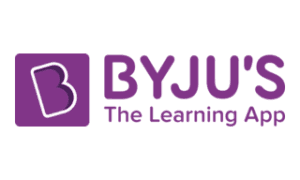Are you ready to unlock the key to transforming education? In today’s digital age, educational technology has become a revolutionary tool that holds immense potential for enhancing learning experiences. From interactive lessons to personalized assessments, integrating technology in schools is rewriting the rules of traditional education. Join us as we embark on a journey to explore the incredible benefits and limitless possibilities of incorporating educational technology into classrooms. Get ready to witness how this integration can ignite curiosity, empower students, and pave the way for a brighter future!
Introduction: The role of technology in education
In today’s fast-paced and increasingly digital world, the use of technology has become an integral part of our daily lives. From communication to entertainment, we rely heavily on technology for various purposes. However, its impact on education is undeniable and continues to revolutionize the way students learn.
Gone are the days when traditional teaching methods were solely relied upon. With the advancement of technology, there has been a significant shift towards integrating it into educational settings. This integration has opened up new avenues for both teachers and students, making learning more engaging, interactive, and effective.
The benefits of incorporating technology in education are numerous and have the potential to enhance student learning outcomes significantly. It provides opportunities for personalized learning experiences while also preparing students for success in their future careers.
Interactive Learning Experience:
One of the most significant advantages of using educational technology is that it creates an interactive learning experience for students. With the help of multimedia tools such as videos, animations, simulations, and virtual reality applications, complex concepts can be presented in a visually appealing manner that captures students’ attention.
This kind of engagement leads to better understanding and retention of information as compared to traditional methods, where students are passive recipients of information. Interactive learning also fosters critical thinking skills, as students are encouraged to explore and discover knowledge on their own through hands-on activities.
Personalized Learning:
Each student has unique strengths, weaknesses, interests, and learning styles. Traditional classroom settings often make it challenging for teachers to cater to the individual needs of each student. However, technology allows for personalized learning experiences that can be tailored to meet the specific needs of students.
With the help of online learning platforms, adaptive software, and educational apps, students can learn at their own pace and in a way that best suits them. This not only enhances their understanding but also boosts their confidence and promotes self-directed learning.
Preparation for Future Careers:
In today’s digital age, technology is an essential part of almost every industry. By incorporating technology into education, we are preparing students for the future job market, where technical skills are highly valued. From learning basic computer skills to coding and programming, students are equipped with the necessary tools to thrive in a technology-driven world.
Furthermore, teachers also have access to various resources and platforms that enable them to stay updated with current trends and advancements in their respective fields. This ensures that they can provide relevant and up-to-date information to their students.
Inclusive Education:
Technology has also played a significant role in promoting inclusive education. With the use of assistive technologies such as screen readers, speech recognition software, and text-to-speech tools, students with disabilities can now participate fully in classroom activities. Additionally, online learning platforms make it possible for students who cannot attend.
What is educational technology?
Educational technology, also known as EdTech, is the use of technological tools and resources to enhance teaching and learning in educational settings. It encompasses a wide range of technologies, from simple tools like projectors and laptops to more advanced ones such as virtual reality and artificial intelligence.
The goal of educational technology is to create a more engaging and effective learning experience for students while also making teaching more efficient for educators. By leveraging technology in education, teachers can personalize instruction, provide real-time feedback, and facilitate collaborative learning opportunities for their students.
Benefits of Integrating Educational Technology
1. Personalized Learning: One of the key benefits of integrating educational technology in schools is the ability to personalize learning. With various digital tools and platforms available, teachers can tailor instruction according to each student’s individual needs and pace. This allows for a more personalized approach that caters to different learning styles and abilities.
2. Engaging Learning Environment: Technology has become an integral part of students’ lives outside of school; therefore, incorporating it into the classroom creates a more familiar environment that students are accustomed to. This can lead to increased engagement and motivation, as students are more likely to be interested in using technology for learning purposes.
3. Accessible Education: Educational technology has made education accessible to all learners, regardless of their physical location or abilities. Through online courses, virtual classrooms, and other digital resources, students can access quality education from anywhere in the world at any time.
4. Real-World Connections: With the use of technology, students can connect and interact with experts, professionals, and other students from around the world. This allows them to gain a deeper understanding of different cultures, perspectives, and real-world applications of their learning.
5. Efficiency for Teachers: Educational technology has also made teaching more efficient for educators. With tools like learning management systems, teachers can easily organize and manage their course materials, create assessments, and provide feedback to students. This frees up more time for teachers to focus on individual student needs and creating engaging lessons.
Benefits of integrating educational technology in schools:
In today’s digital age, technology has become an integral part of our daily lives. It has not only transformed the way we live, work, and communicate but also revolutionized the education sector. The integration of educational technology in schools has opened up a world of opportunities for both teachers and students. It has transformed the traditional classroom setting into a more interactive and engaging learning environment. Let’s explore some of the key benefits of integrating educational technology in schools.
1. Enhances student engagement:
Integrating technology in classrooms can significantly increase student engagement by making learning more interactive and fun. With tools like interactive whiteboards, online quizzes, and educational apps, students are actively involved in the learning process rather than just passive recipients of information. This leads to improved retention rates as students are more interested and motivated to learn.
2. Personalized Learning Experience:
Educational technology allows teachers to tailor their teaching methods based on individual student needs. With various online platforms and tools available, teachers can create personalized lessons that cater to different learning styles and levels of understanding. This ensures that students receive a customized learning experience that is best suited for them.
3. Access to a Wide Range of Learning Resources:
Integrating technology in schools gives students access to a vast array of digital resources, such as e-books, online libraries, educational videos, simulations, etc., which are often not available in traditional classrooms due to budget constraints or limited physical space.
Enhancing student engagement and motivation
Integrating educational technology in schools has become increasingly popular in recent years, and with good reason. Not only does it provide access to a vast array of resources and tools, but it also has the potential to greatly enhance student engagement and motivation in the classroom. In this section, we will delve into how incorporating technology can ignite a passion for learning among students and create a more dynamic and interactive learning environment.
1. Personalized Learning Experience:
One of the greatest benefits of using educational technology is that it allows for a personalized learning experience tailored to each individual student’s needs. With online platforms and digital tools, teachers can easily differentiate instruction based on students’ abilities, interests, and learning styles. This level of customization not only helps students better understand the material but also makes them feel more invested in their education.
2. Interactive Learning:
Gone are the days when lectures were the primary mode of teaching. Educational technology offers various interactive opportunities for students to engage with the content actively. From virtual simulations to gamified lessons, these innovative techniques make learning more enjoyable and engaging for students. By using technology as an instructional tool, teachers can capture their students’ attention while fostering critical thinking skills.
3. Real-World Relevance:
With educational technology, teachers can bring real-world relevance into the classroom effortlessly. Through online research projects or digital presentations, students can explore current events or global issues that relate directly to what they are studying in class.
Success stories: Examples of schools that have successfully integrated technology into their curriculum
In recent years, there has been a significant shift in the education landscape towards integrating technology into classroom instruction. This approach has gained traction due to its potential to enhance teaching and learning experiences, provide personalized learning opportunities, and prepare students for the digital world they will enter upon graduation.
While many schools have embraced this trend with open arms, some institutions are still hesitant to fully integrate technology into their curriculum. However, several success stories from schools that have successfully integrated educational technology may serve as inspiration for those considering making the leap.
Here are some examples of schools that have paved the way for successful integration of technology into their curriculum:
1. Monument Mountain Regional High School (MMRHS), Massachusetts
Located in Great Barrington, MMRHS is a public high school that serves approximately 700 students in grades 9–12. The school embarked on a one-to-one iPad initiative in 2012 with the goal of integrating technology into all aspects of teaching and learning.
The school saw an increase in student engagement and motivation after implementing iPads across all subjects. According to Principal Marianne Young, “teachers are creating new ways to access material and content specifically tailored toward student needs.” For instance, teachers developed interactive lessons using apps like Nearpod and Socrative, which allowed students to actively participate in class discussions through their iPads.
Moreover, using iPads also helped teachers easily differentiate instruction by providing personalized resources for each student’s individual needs.
Challenges and solutions to implementing educational technology in schools
The use of educational technology in schools has become increasingly popular over the years, as it offers a wide range of benefits for both students and teachers. From personalized learning to improved communication, integrating technology into education has the potential to transform the traditional classroom setting. However, like any new concept, there are also challenges that come with implementing educational technology in schools. In this section, we will explore these challenges and discuss potential solutions for overcoming them.
1. Lack of Resources and Funding
One major challenge facing schools when it comes to incorporating technology is the lack of resources and funding. Many schools do not have enough budget allocated for purchasing devices or software programs, making it difficult to fully embrace educational technology. This can lead to unequal opportunities for students who may not have access to technology at home.
Solution: To overcome this challenge, schools can look into grants or partnerships with local businesses to acquire the necessary resources. Additionally, they can consider investing in affordable options such as open-source software or refurbished devices.
2. Resistance from Teachers
Another obstacle to implementing educational technology is resistance from teachers, who may feel overwhelmed by the idea of incorporating new tools into their teaching methods. Some may be reluctant to change their established lesson plans or fear that they lack the technical skills required.
Solution: To address this issue, it is essential for schools to provide proper training and support for teachers on how to effectively use these technologies in their classrooms. Professional development workshops and peer mentoring programs can help alleviate concerns and build confidence among educators.
3.
Resistance from Students
Similar to teachers, students may also resist the use of technology in classrooms. They may be more comfortable with traditional teaching methods or feel intimidated by the new tools. Some students may also struggle with using technology if they do not have access to it outside of school.
Solution: School administrators and educators can address this challenge by involving students in the decision-making process and explaining the benefits of educational technology. Additionally, schools can provide resources such as computer labs or loaner devices for students who do not have access to technology at home.
4. Technology Dependence
One concern with incorporating educational technology is that students may become overly dependent on it, leading to a lack of critical thinking skills and creativity. This dependency can also cause distractions and decrease attention spans.
Solution: To prevent overdependence on technology, schools should strike a balance between using technology and traditional teaching methods. Encouraging activities that promote critical thinking, problem-solving, and collaboration without the use of technology can help mitigate this issue.
5. Data Security and Privacy Concerns
With the use of educational technology comes data security and privacy concerns. Schools need to ensure that student information is protected from potential cyber threats or breaches.
Tips for educators on how to effectively use technology
In today’s digital age, technology has become an integral part of our daily lives. It has also made its way into the education sector, with schools and educators incorporating various forms of technology into their teaching methods. However, simply having access to technology is not enough; it is crucial for educators to understand how to effectively use it in the classroom to maximize its potential.
Here are some practical tips for educators on how to effectively use technology in their teaching:
1. Familiarize Yourself with the Technology: Before implementing any form of technology in your classroom, take some time to familiarize yourself with it. This could mean attending workshops or training sessions, playing around with different tools and software, or seeking help from tech-savvy colleagues. The more comfortable you are with the technology, the better you will be able to integrate it into your lessons.
2. Have a Clear Purpose: One of the most important things when using technology in education is having a clear purpose for its use. Don’t just incorporate it because it’s trendy or expected; think about how it can enhance your students’ learning experience and achieve specific learning goals. Whether it’s creating interactive presentations or using educational apps for practice exercises, make sure there is a solid reason behind using technology in your lesson plan.
3. Start Small: Don’t feel overwhelmed by trying to incorporate too much technology at once; start small and simple. Choose one or two tools that align with your lesson objectives and experiment with them first before incorporating more advanced ones.
Conclusion
Educational technology has the potential to revolutionize the way we approach learning and teaching in schools. From digital resources to interactive tools, technology offers a wide range of benefits that can enhance the educational experience for both students and teachers.
By integrating technology into the classroom, students have access to a wealth of information at their fingertips. They can engage with material in a more interactive and immersive way, making learning more engaging and enjoyable. With access to online resources, students can also continue their learning outside of the classroom, allowing them to review and reinforce concepts at their own pace.
For teachers, technology offers an opportunity to personalize instruction for each student’s unique needs and abilities. With data-driven analytics, teachers can track student progress in real-time and identify areas where additional support may be needed. This allows for a more individualized approach to teaching that meets the diverse needs of students.



































